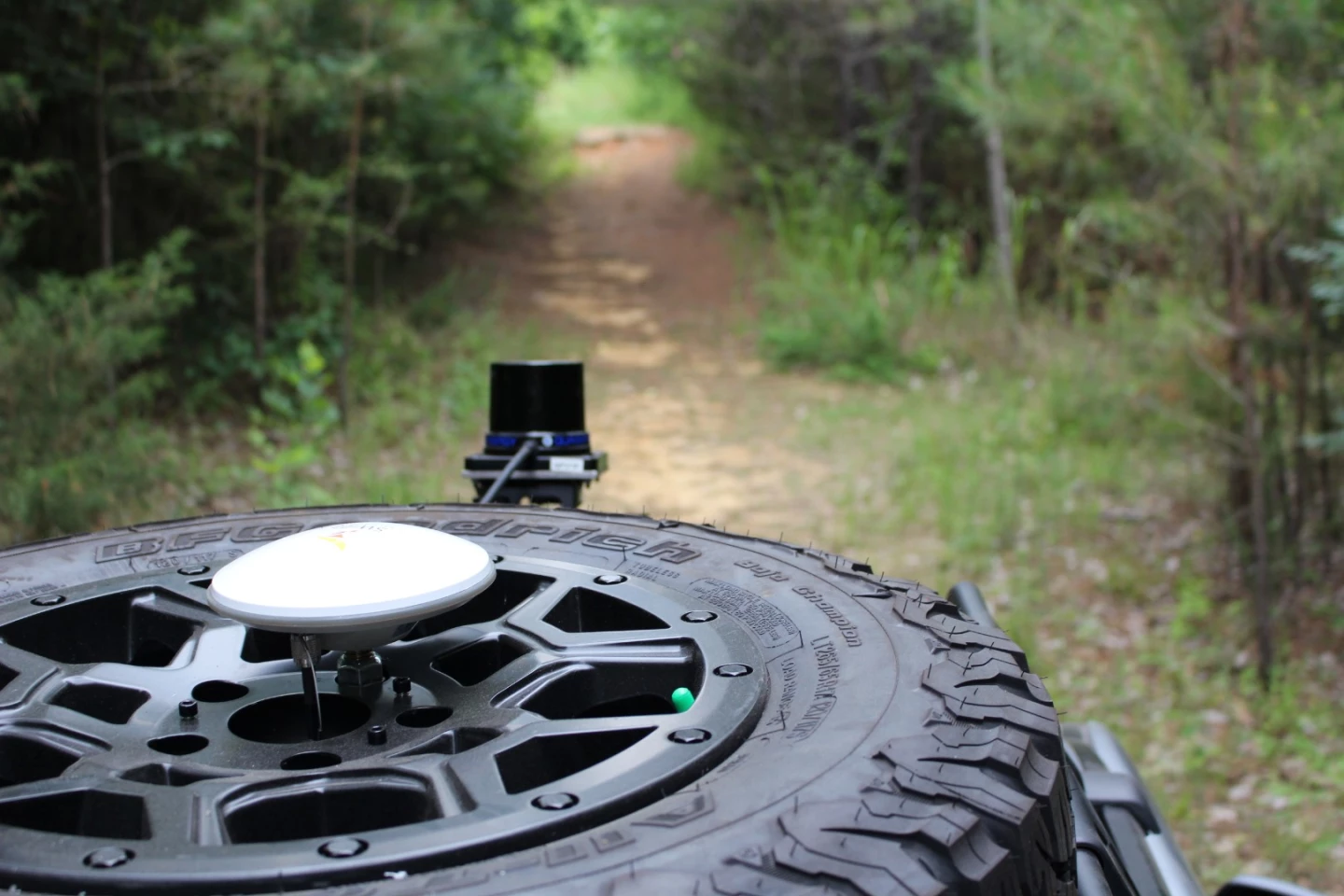There were plenty of automakers and aftermarket shops lining up to attract attention at last week's SEMA Show, but one of the show's most interesting vehicles came from the academic sector. The "Halo Project" Subaru from Mississippi State University looks at first glance like any other SEMA SUV – flared fenders, a powerful bumper, big tires and a loaded roof rack. But this R&D project is far from a basic show car, featuring an all-electric powertrain and autonomous hardware suite in exploration of the future of off-road navigation.
Off-roading is often thought of in purely recreational terms, at least in the United States, and especially at a show like SEMA. As such, it can seem like a poor fit for autonomous driving technology – when you're out kicking up dust for pure fun, why would you want to hand the reins over to sensors, computers and actuators?
But off-road driving is a necessary reality for many people around the world and the unpredictable, unrefined three-dimensional nature of the terrain presents unique challenges for self-driving technology. It's not so surprising, therefore, when someone like Land Rover or Mississippi State's Center for Advanced Vehicular Systems (CAVS) pursues all-terrain autonomous research.
In fact, CAVS focuses its greater autonomous research program more on non-urban environments, identifying off-road, industrial and heavy-duty duty vehicle automation as a few of the last frontiers in self-driving development. The center believes its Halo Project work could eventually result in breakthroughs relevant to military, agriculture, and search and rescue, along with personal commuting.
"Less than one percent of the Earth is paved, so we needed a vehicle that could be a capable development and test platform both on- and off-road," explains CAVS associate director and Halo Project lead Matthew Doude. "The Halo Project vehicle is all-wheel drive with tons of wheel torque from its four independent electric motors. This allows us to do research on topics like self-driving cars, even in rugged environments."
Plus, it looks way cooler than whatever self-driving rolling egg concept the major manufacturers are getting ready to release next.

The Halo Project actually brings together several key areas of CAVS auto research, from non-urban autonomy, to electric powertrains, to automotive steel. The car started life as a basic Subaru Forester before the CAVS team ripped the boxer engine out and replaced it with four YASA motors at the wheels. The motors team for a whopping 7,375 lb-ft (10,000 Nm) of torque, distributed with help from custom-designed transmissions from the UK's Hewland Engineering. A next-gen A123 lithium-ion battery offers an estimated 230-mile (370-km) range.
The Halo car is capable of driving both on- and off-road without human intervention, maintaining a keen sense of its surroundings via its multi-sensor set. Stereo cameras act as the car's eyes in identifying and classifying objects ahead; four LiDAR units provide the data for detailed 3D maps; and radar helps identify terrain type and see through rain and snow. The data from all those sensors gets processed through an onboard Nvidia supercomputer.

The Halo's upgraded off-road suspension was built in part with steel melted, cast and rolled at the CAVS steel research center. And to give the car the big, bold looks it needed to make an impression at SEMA, CAVS teamed with Clinton Body Shop on the bodywork and paint job.
After last week's SEMA debut, the Halo car will make its way to various conferences and automotive events. CAVS plans to build an autonomous test track on land recently acquired by MSU.
Source: Mississippi State University










